Polymer processing companies are under constant pressure to be as efficient as possible – especially when it comes to injection molding. Fixed takt times, high quality standards and changing flexibility requirements make automation solutions a decisive factor for success. In this article, we’ll outline current challenges facing the industry and show how cutting-edge automation technology can revolutionize manufacturing processes in the plastics industry.
Key takeaways
Challenges facing the plastics industry
Whether for medical equipment, electronics components or packaging material, the plastics industry is characterized by highly precise manufacturing processes and constantly growing quality standards. In particular, injection-molded parts have tight tolerances and complex geometries – and often need to be manufactured in high quantity and on a tight schedule. Let’s take a closer look at these challenges:
Precision, quality and traceability
Fixed takt times and reliable processes
Many products, complex material flows
Strict cleanliness requirements
Personnel shortages
Tight spaces in manufacturing
Cost pressure and price sensitivity
Requirements for automation solutions
The challenges facing the plastics industry are increasing as manual processes quickly reach their limits in terms of both efficiency and errors. Automating intralogistics processes is a major step companies can take to increase their competitiveness over the long term. When choosing to automate, potential technologies have to meet the following requirements:
- Reliability: Maximum reliability is essential to prevent interruptions to the supply of materials and the associated standstills.
- Flexibility: Systems must be able to adapt to changing products and processes dynamically.
- Scalability: Solutions should grow with the company and be easy to expand without any fuss.
- Space-effectiveness: Compact, space-saving designs allow companies to make the best use of existing transport and warehousing space.
- Cost efficiency: In an industry highly sensitive to costs, every investment has to deliver a measurable return on investment – quickly.
Automation for the plastics industry: Technological solutions
To keep up with the demands of the plastics industry, different solutions come into play, which can be combined flexibly based on company size, production volume and available space.
Automated guided vehicles (AGVs) and autonomous mobile robots (AMRs)
Automated guided vehicles automatically transport empty containers, raw materials, semi-finished and finished products between the warehouse, the production area and shipping. Modern AGVs are equipped with sensors, navigation technology and safety functions that ensure they remain a perfectly safe and reliable link in your facility’s goods flow. AMRs such as our Open Shuttles are especially flexible and are ideal for transporting containers, cartons, trays and pallets around the warehouse.
Learn more about the advantages of our AMRs in our blog post, What are Autonomous Mobile Robots? A Guide.
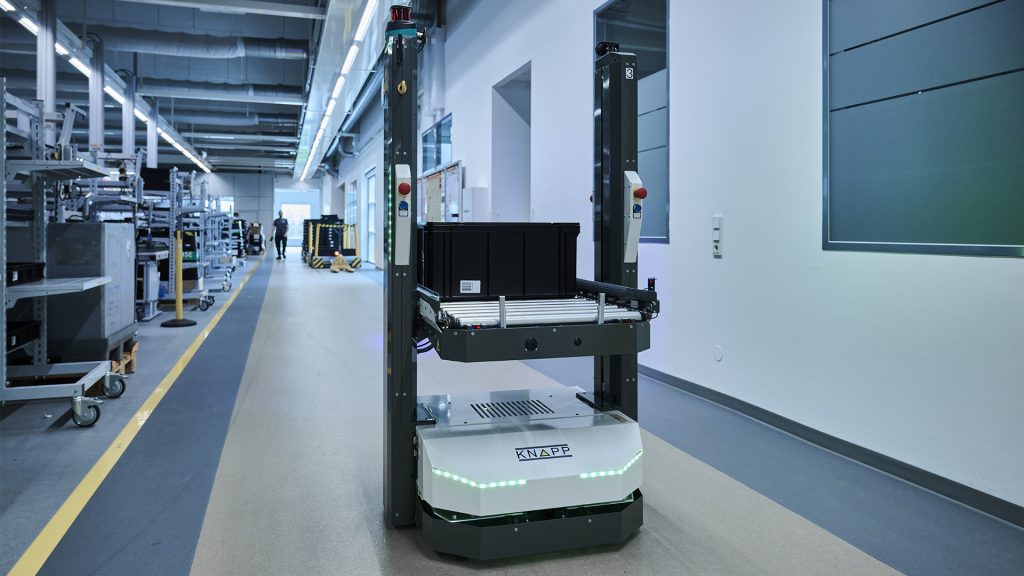
Mobile storage and transport system
Using mobile container buffers together with autonomous mobile robots, companies have their materials readily available fully automatically. The combination of the TripleA container buffer and our Open Shuttle Fork autonomous mobile robots forms a tailored automation solution for a consistent material flow to the injection molding machines. The mobile container buffer can hold several containers filled with bulk material as well as empty containers required in the production areas, making transport of the requested material from one production line to the next work station in the process fast and efficient. The storage system is robust and reliable and can be easily integrated into existing intralogistics processes. Paired with the Open Shuttle Fork, which is not only able to transport the container buffers but also pallets, the system allows you to flexibly scale your internal transport as required.
Find out more about TripleA >
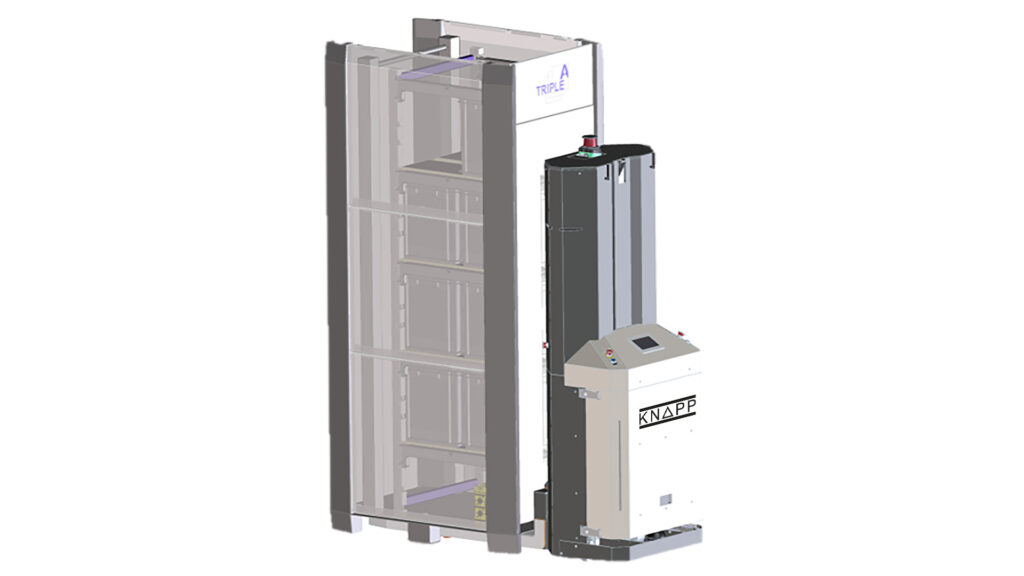
Automated storage and retrieval systems
Highly dynamic storage solutions such as automated small parts warehouses, shuttle systems or warehouse robotics systems allow companies to store and retrieve containers and components quickly and while saving space. These solutions ensure high availability of materials and support just-in-time production processes. The Evo Shuttle, along with the AeroBot robotic warehouse system, presents the plastics industry with exciting opportunities to efficiently store materials and empty containers. For larger loads, our pallet stacker cranes store and retrieve pallets automatically and efficiently.
Find out more about our AS/RS >
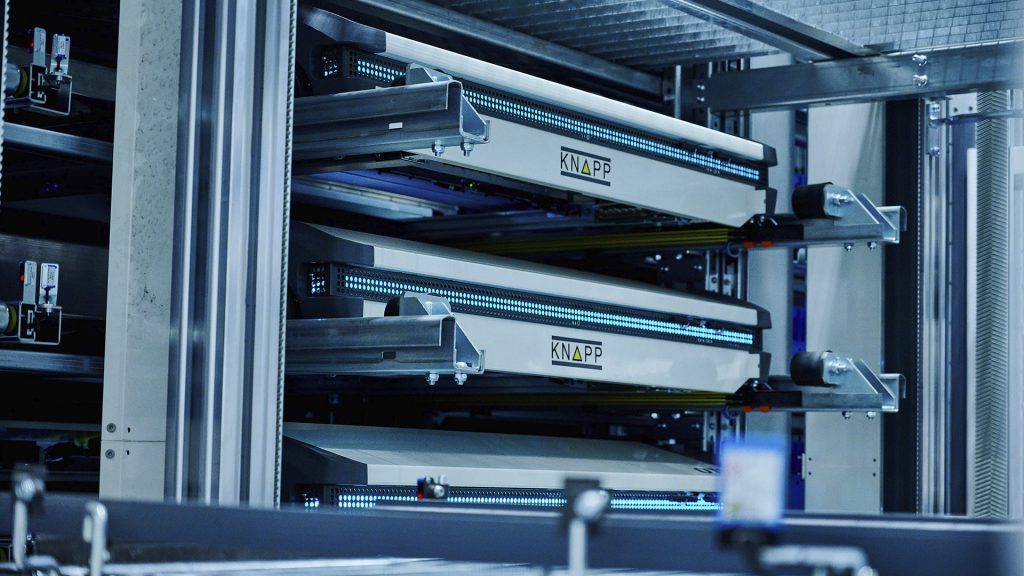
Robotics and gripper systems
Industrial robots palletize, sort and pack items directly at the machines or at goods-out. Combining them with AI-powered image processing systems and AMRs that automatically transport goods makes it easy to automate quality control, making employees’ lives easier while reducing error rates. There are plenty of opportunities to fully automate palletizing and depalletizing as well as stacking and destacking both cartons and standard load carriers.
Find out more about efficient pallet handling and quality assurance with vision technology >
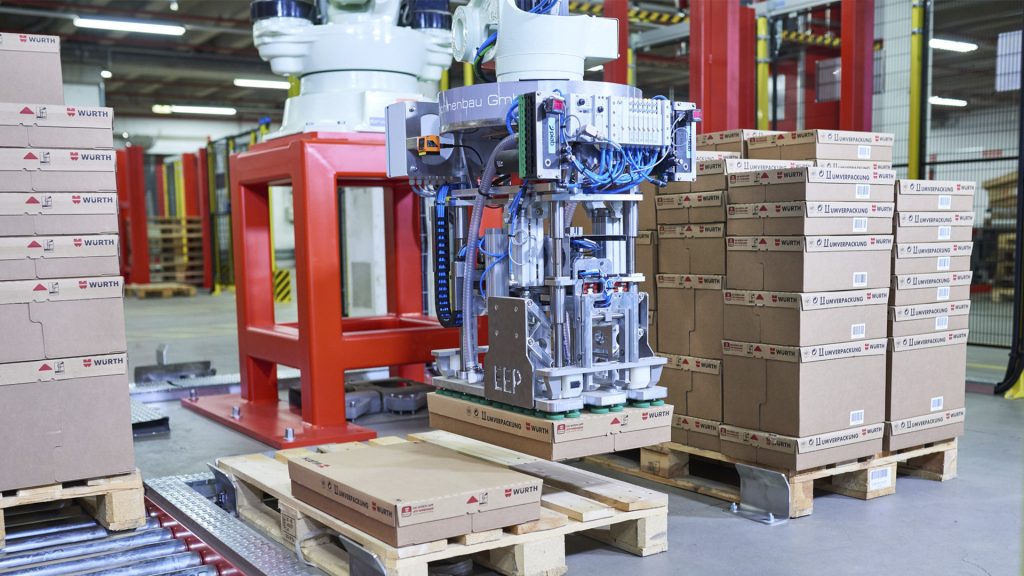
Conveyor systems
Belt conveyors and roller conveyors connect different production areas. They can be customized to the system and are particularly useful when the material flow is generally constant, though it’s important to make sure that the conveyors don’t block access to the production machines. The Streamline conveyor system can be either mounted on the floor as a bridge construction or suspended from the ceiling – whichever option makes the best use of space.
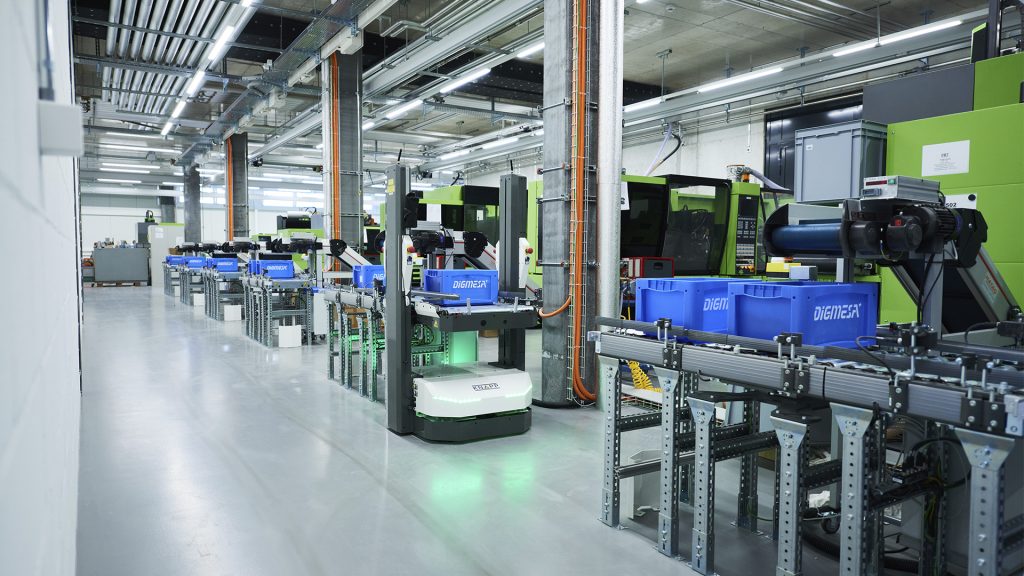
Learn more about the automation solution for Digmesa >
Digital integration: The key to success
Automated physical processes only reach their full potential when they are digitally integrated as well. Intelligently connecting machines, logistics systems and software creates an efficient overall system and integrating it all into existing IT systems, such as warehouse management systems (WMS) or SAP® EWM, keeps things between production and logistics running smoothly. IoT sensors and digital twins round out the concept to allow for predictive maintenance and optimized route planning. Transparent, real-time data flow provides a solid basis for decisions and continuously improving processes in warehouse and production logistics.
Find out more in our blog post, “Digital Twins in Logistics”.
Example: Optimal automation solution for manufacturer of injection molded parts
To get a closer look at what a clever automation solution looks like in real life, check out this mini case study of a manufacturer of injection molded parts for the medical sector.
The solution at a glance
Evo Shuttle automated small parts warehouse as a buffer warehouse for injection molded parts and empty containers
Open Shuttles for transporting containers to supply production
KiSoft FCS generates orders for the Open Shuttle fleet
Central automation processes
1) Goods-in
2) Transfer location between warehouse and production
3) Automatic storage in production
4) Just-in-time production supply
- Supplying injection molding machines with empty containers from the Evo Shuttle
- Returning containers filled with injection molded parts to the Evo Shuttle
- Transporting injection molded parts to the assembly area and bringing empty containers back to the Evo Shuttle
- Transporting finished parts ready for palletizing to the transfer location and bringing them to the conveyor for packing
5) Quality check
6) Goods-out
Intralogistics automation: Advantages for the plastics industry
Are you interested in automation solutions for the plastics industry? We would love to help you learn more!
Further reading recommendations

Optimize intralogistics processes and increase performance using automation. What is the right level of automation for your operation? In this post, we present various levels from innovative manual warehouses up to fully automatic systems.

Autonomous mobile robots (AMRs) facilitate flexible, efficient transport processes. Whether deployed in manufacturing, food retail or in distribution logistics – their range of use is wide. Discover more about this future-oriented technology.

What does the smart factory of the future look like? Find out more about our vision for smart manufacturing!
